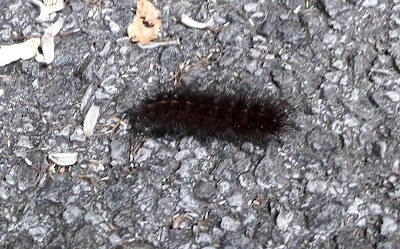News about seasonal changes at Filnore Woods and how to get involved as a volunteer, if you want to. As well as things seen and done at FILNORE WOODS, THE BLOG WILL INCLUDE THINGS YOU CAN SEE IN YOUR STREET OR GARDEN. To get regular updates, you used to be able to enter your email address in "FOLLOW BY EMAIL" (just below on the right) But this seems to have stopped working so GOOGLE 'FILNORE WOODS BLOG' AND FOLLOW 'FILNORE WOODS' ON FACEBOOK
Sunday, 31 October 2021
LAWYER'S WIG
Monday, 25 October 2021
IVY FLOWERS
Although the leaves on the climbing stems of ivy are five-pointed, the flowering stems have only one point. They look like two different plants.
The flower buds are like little drumsticks.
They open into greeny-yellow flowers, each with five projecting stamens.
These flowers provide a feast of nectar for insects when most other flowers are over.
And in spring they will present sprays of black berries for birds and mice, when other plants are flowering.
Friday, 22 October 2021
BEARDLESS
Wednesday, 20 October 2021
HORNET RESTING
This handsome hornet (Vespa crabro) was sitting on an outside window sill having a rest. It is probably a new queen looking for a sheltered place to hibernate.
In spring she will emerge and find a place to start a new colony. She will chew up some old wood from a dead branch or an oak beam, mix it with saliva and make a sort of papier maché to build the first layer of a nest. When the first eggs have developed into workers she leaves all the nest building and care of the larvae to them while she concentrates on egg laying.
Monday, 18 October 2021
DEWY WEBS
Friday, 15 October 2021
GARDEN CROSS
Sunday, 10 October 2021
LEAF MINERS
Monday, 4 October 2021
SPEEDY CATERPILLAR
Saturday, 2 October 2021
THE BLACK SPOT
Not the Black Spot delivered by Blind Pew in Treasure Island but a common fungal visitor on sycamore leaves at the end of summer.
Rather decorative, I think.
















